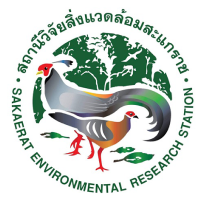Keywords :
Dyna-CLUE Model; Land Use Change; Maxent Model; Pycnonotus melanicterus; Sakaerat Environmental Research Station; Species Distribution
บทคัดย่อ :
The objectives of this research were to predict land-use/land-cover change at the Sakaerat Environmental Research Station (SERS) and to analyze its consequences on the distribution for Black-crested Bulbul (Pycnonotus melanicterus), which is a popular species for bird-watching activity. The Dyna-CLUE model was used to determine land-use allocation between 2008 and 2020 under two scenarios. Trend scenario was a continuation of recent land-use change (2002-2008), while the integrated land-use management scenario aimed to protect 45% of study area under intact forest, rehabilitated forest and reforestation for renewable energy. The maximum entropy model (Maxent), Geographic Information System (GIS) and FRAGSTATS package were used to predict bird occurrence and assess landscape fragmentation indices, respectively. The results revealed that parts of secondary growth, agriculture areas and dry dipterocarp forest close to road networks would be converted to other land use classes, especially eucalyptus plantation. Distance to dry evergreen forest, distance to secondary growth and distance to road were important factors for Black-crested Bulbul distribution because this species prefers to inhabit ecotones between dense forest and open woodland. The predicted for occurrence of Black-crested Bulbul in 2008 covers an area of 3,802 ha and relatively reduces to 3,342 ha in 2020 for trend scenario and to 3,627 ha for integrated-land use management scenario. However, intact habitats would be severely fragmented, which can be noticed by total habitat area, largest patch index and total core area indices, especially under the trend scenario. These consequences are likely to diminish the recreation and education values of the SERS to the public.
เอกสารอ้างอิง :
Trisurat, Y., & Duengkae, P. (2011). Consequences of land use change on bird distribution at Sakaerat Environmental Research Station. Journal of Ecology and Environment, 34(2), 203-214.



